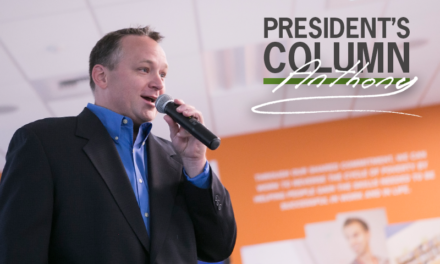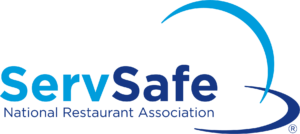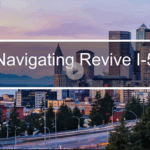By Anthony Anton, president and CEO, Washington Hospitality Association
I turn 50 this month and have spent almost my entire professional life doing my best to serve an industry that supported my family from the moment each of my four grandparents stepped onto Ellis Island.
Along the way, I have gotten to know more than 1,000 operators and I have learned far more from you than I could possibly hope to pass on. Sometimes the weight of a repeated observation rises to the point of a conclusive truth and I feel compelled to pass it on.
When bad weather hits, the businesses that are doomed are the ones who spend most of their time blaming their struggles on the sky.
But the businesses that survive acknowledge the storm and spend their time instead strategically investing in waterproof gear and rain boots to weather the storm.
[expander_maker id=”1″ more=”Read more” less=”Read less”]
The members I know will survive our ongoing labor shortage crisis are asking the right questions about how to build a pipeline of employees and how to retain the right ones.
A competitive labor market where employers have to offer better hourly rates to attract and keep employees is healthy for an economy — as painful as it is for business owners. I do realize this is a real struggle, but it’s going to remain an issue for the next several years as long as the number of people who are retiring continue to exceed the number of people coming into the workforce. It’s a big workforce development issue for all industries.
Finding a permanent pipeline of available employees is a more sustainable answer than just waiting for the economy to fail so more people apply for your open positions.
That pipeline could be becoming best friends with the ProStart or workforce coordinator at your local high school. It could be getting to know your Employment Security Department business services representative or getting to know who runs the career services center at your local community college. These are rain gear solutions to weather this storm.
I understand that when you do find an employee, depending on which part of the hospitality industry you’re in, you now have health care, Paid Family and Medical Leave, paid sick leave and a high minimum wage added into your cost. So, the more you can reduce turnover, the better you are.
When we slow down enough to value our employees, treat them the way we want to be treated and overcommunicate, we keep our employees. When we get busy and take those things for granted, we see turnover. When employees feel like the company is invested in their career ladder, that we mean it when we say it and that they trust us, they turn down job offers for more money at other companies.
Reducing turnover starts with our own mirror. Recently, I realized that each day I schedule 10 hours in 15-minute increments of my time for supporting the departments, engaging volunteers, the administrative side of being CEO, working with the board of directors, keeping track of national, key projects, crises and unscheduled work. But you know what’s not in there? Building employee pipelines, trust or culture on this team. There needs to be.
Many of you know me as an outgoing and sociable guy. But I would guess that most of my team members would say I’m a numbers guy: “Anthony is all about numbers, results and measurements,” to the point of eye rolls. So, it’s no surprise that I have spent little of my time focusing on things that are tough to measure like culture and trust.
Now I’m asking myself: “What do I stop doing so I fit in these critical, turnover-reducing actions?”
At the association, reducing turnover starts with me, and in your business, it starts with you.
Trust and culture have a hard number impact if you’re not paying attention. So, gear up to weather the storm by strategically developing a workforce pipeline and reducing turnover today.
[/expander_maker]














